Explore Edge-to-Edge Quilting Design
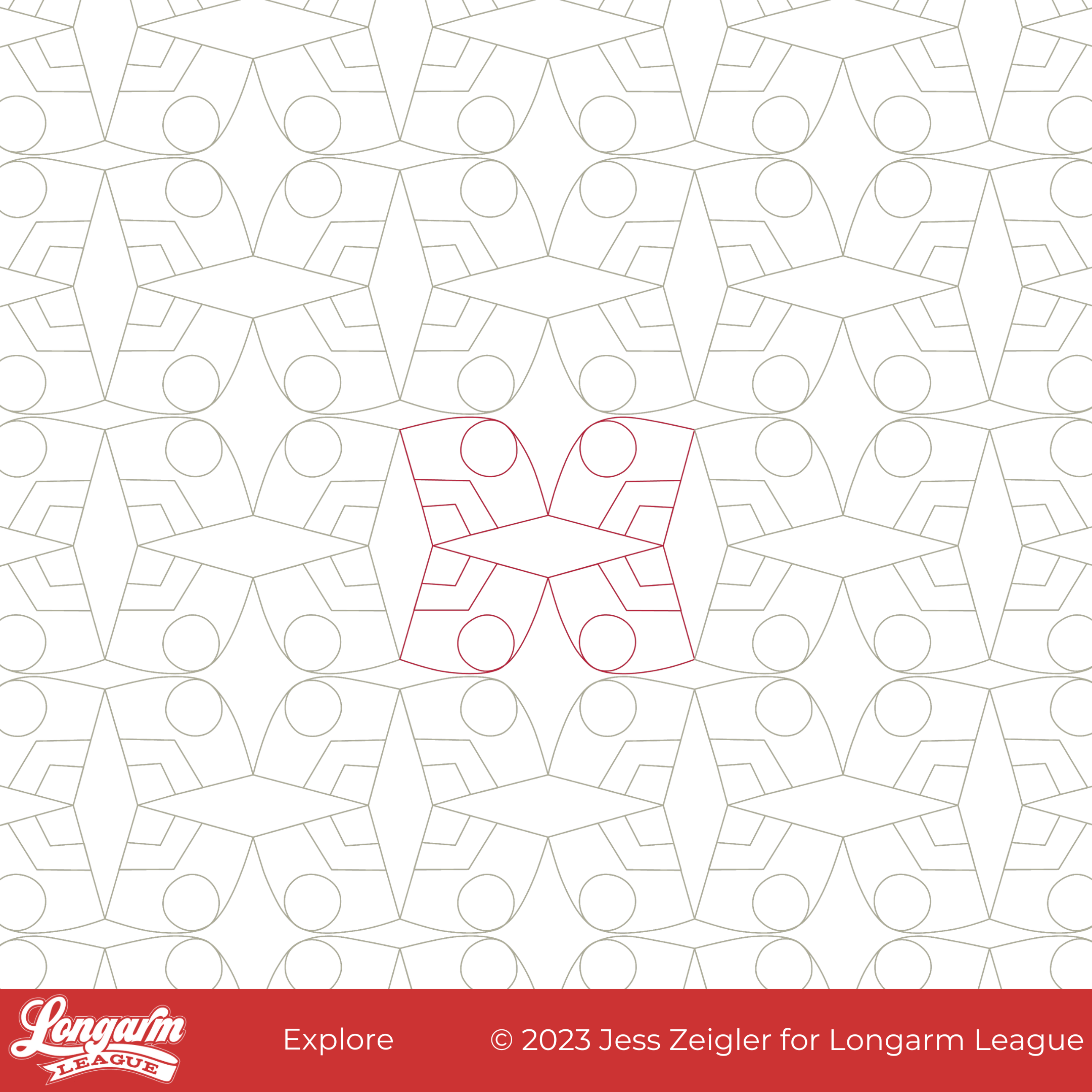
What started as a baseball diamond shape morphed into something that looked reminiscent of a graphic for America's National Parks. From there, I repeated the shapes at odd angles so that some secondary and tertiary diamonds emerged, but the "explore" feeling from an imagined poster never left.
What I like about this design is the graphic boldness of straight lines, angles, curves, and circles all playing together.
I found it funny that because I used such low volume AND extremely low contrast fabrics in this quilt, the quilting design pretty much swallowed up the whole quilt pattern! I was shocked by how little I could see the quilt pattern after quilting. Oops!


The Quilt
Believe it or not, this quilt is the Star Pop II quilt by Emily Dennis of Quilty Love. Here it is on my design wall before quilting as proof there were stars involved. Ha!

And then, after quilting: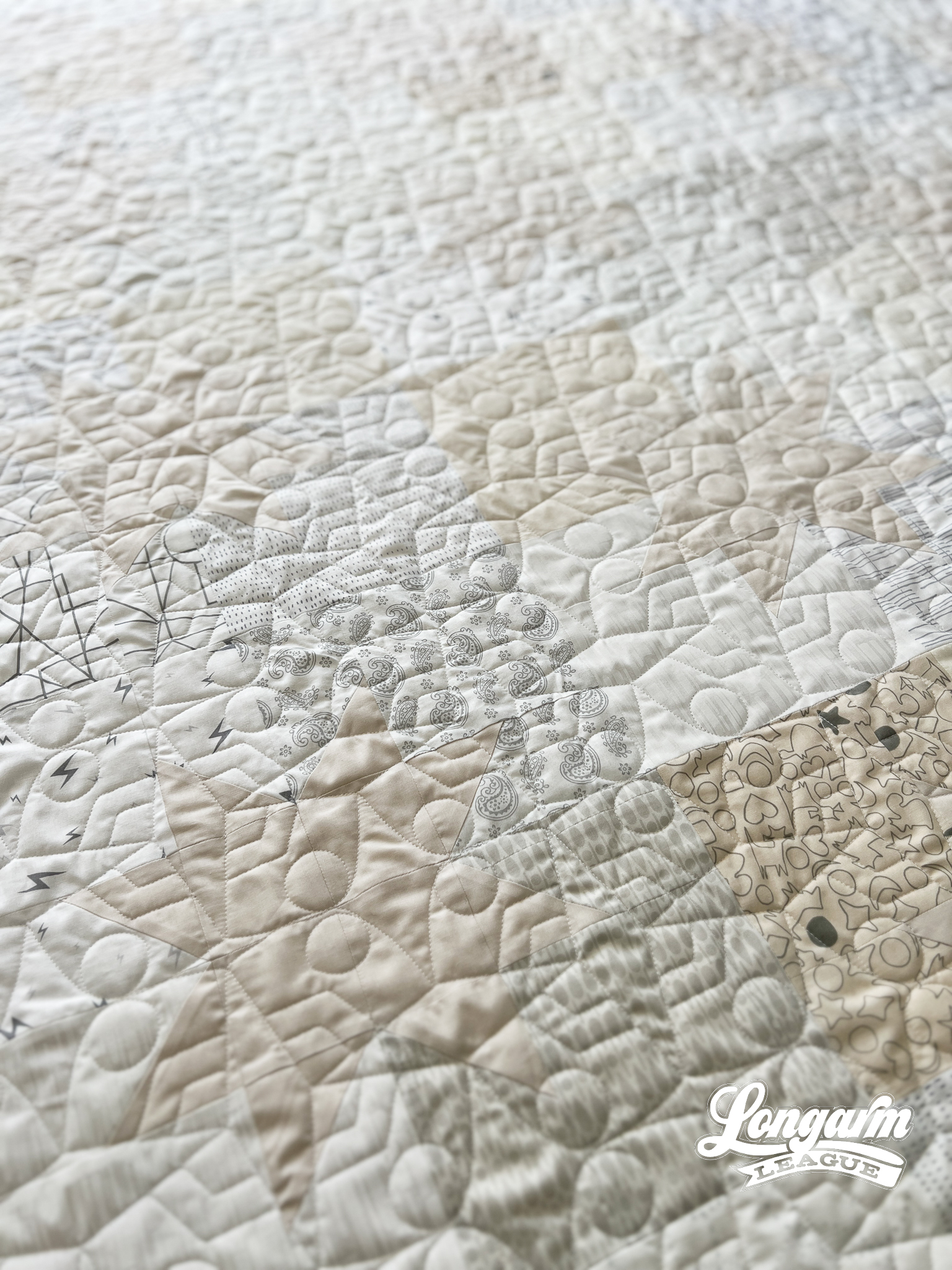
To be sure, I knew that the patchwork would be subtle. It was intentional. This was a wedding quilt for a...
Sprawl Digital Quilting Design
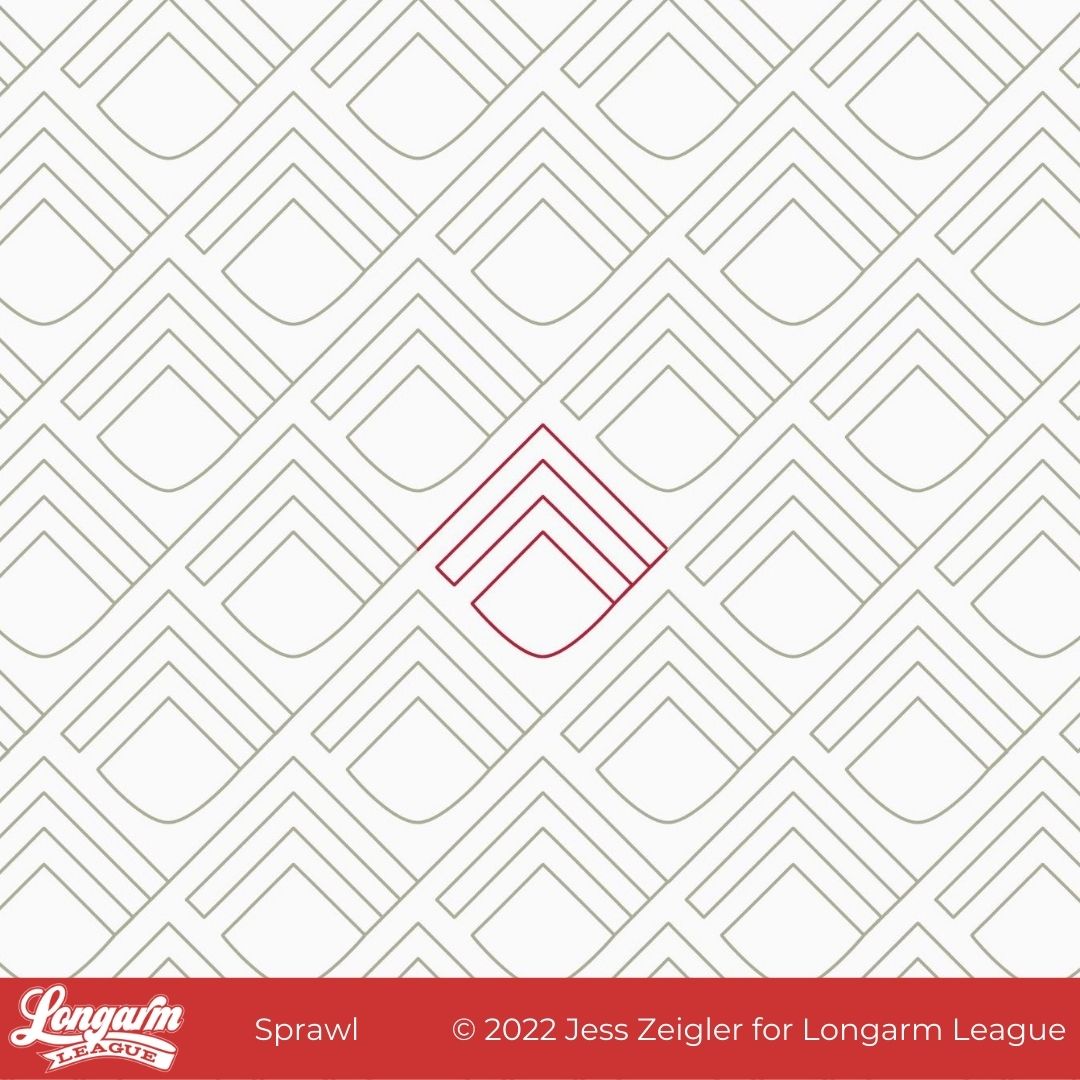
Quilty friends, this design is called Sprawl.
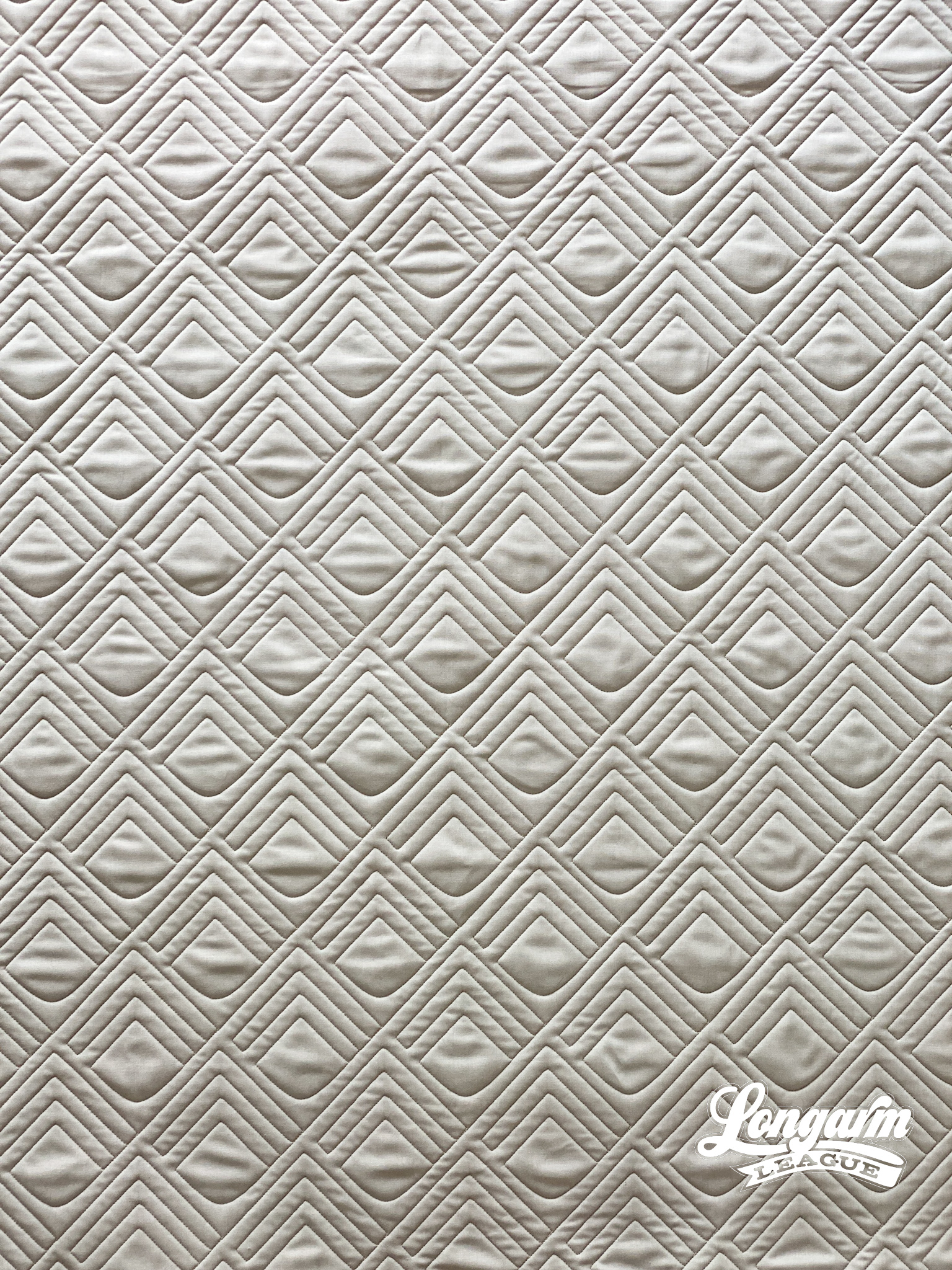
I love, love, love using echoed lines and shapes to make a textural impact. You can see that I used that technique with this design while also incorporating a small curve.

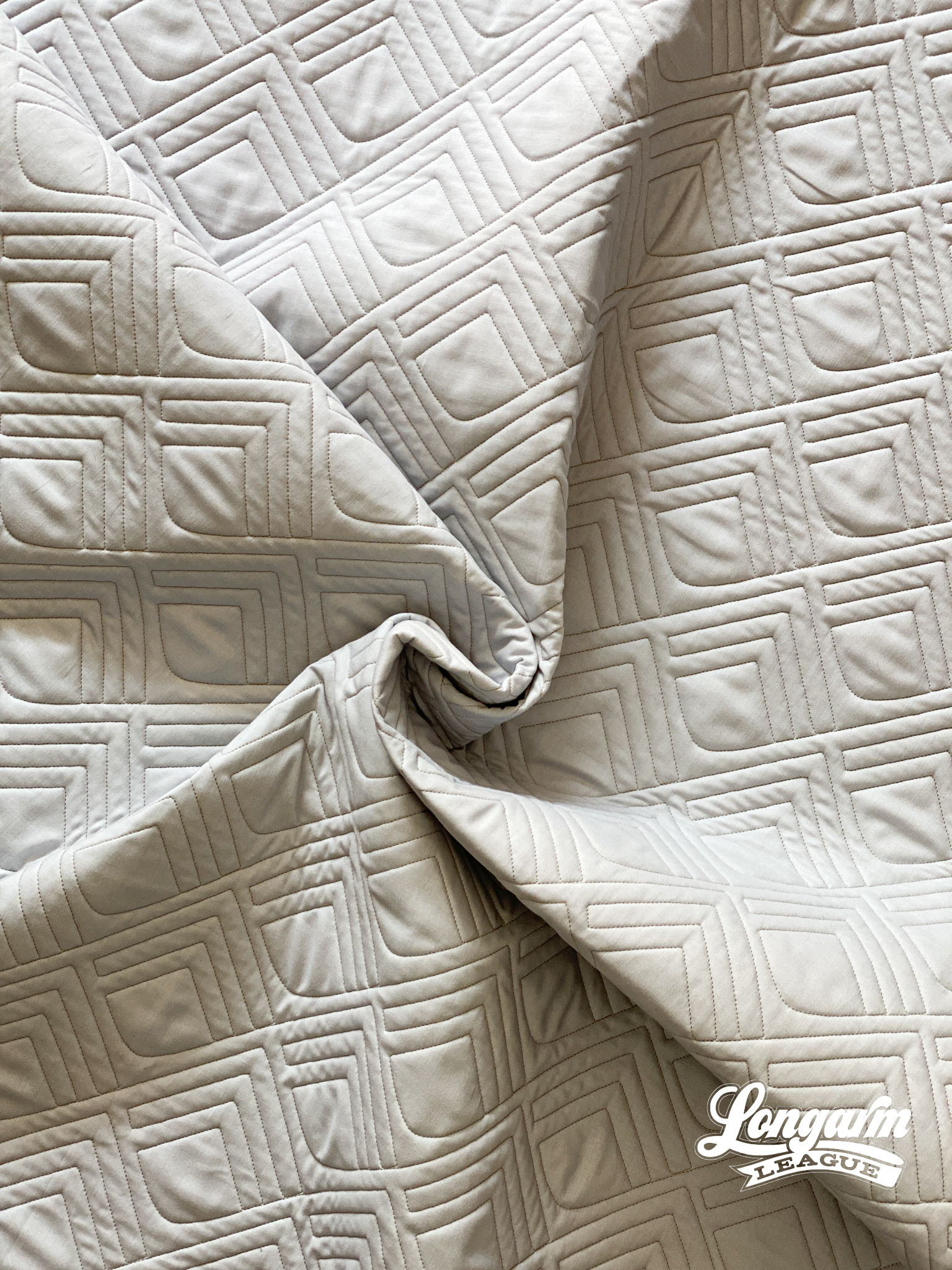
Here are my specifics using a baby-sized sample in the photos (45" x 50" quilt size):
Row height: 3"
Gap: -1.478"*
Pattern height: 4.478"
Offset: 50%
Backtracking: minimal
*Gap refers to the space I'm allowing between rows. I use an Intelliquilter for my computerized quilting, and because that measurement is quantifiable, I provide it here.
The row height PLUS the noted gap amount totals the "pattern height". If you don't use an Intelliquilter, you'll likely want to start sizing with the pattern height number and adjust the spacing between rows to your liking. You may not have a measurement available that tells you the measurement between rows, and that's okay.
We've begun adding a PDF to our zipped file so that you can print out design images and add your ...
How do I find clients for my longarm quilting services?
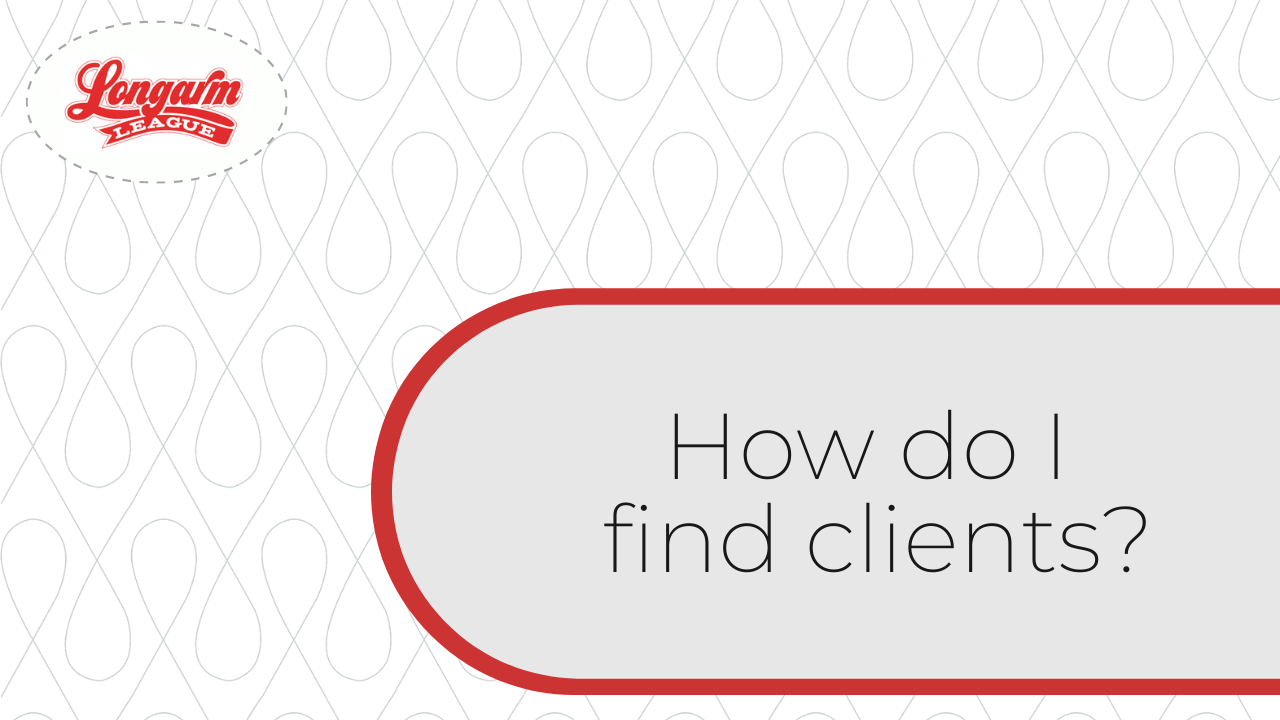
The first question I'm going to ask is: Are you making it easy for quilters to hire you for longarm quilting services? What might be holding them back? How can we overcome objections to hiring you?
I recently asked my Instagram audience from my @threadedquilting account: If you're a quilter who has never hired a longarm quilter, why not?
I left the question open-ended and collected responses for the 24 hours the Instagram Story was live. I got some interesting responses!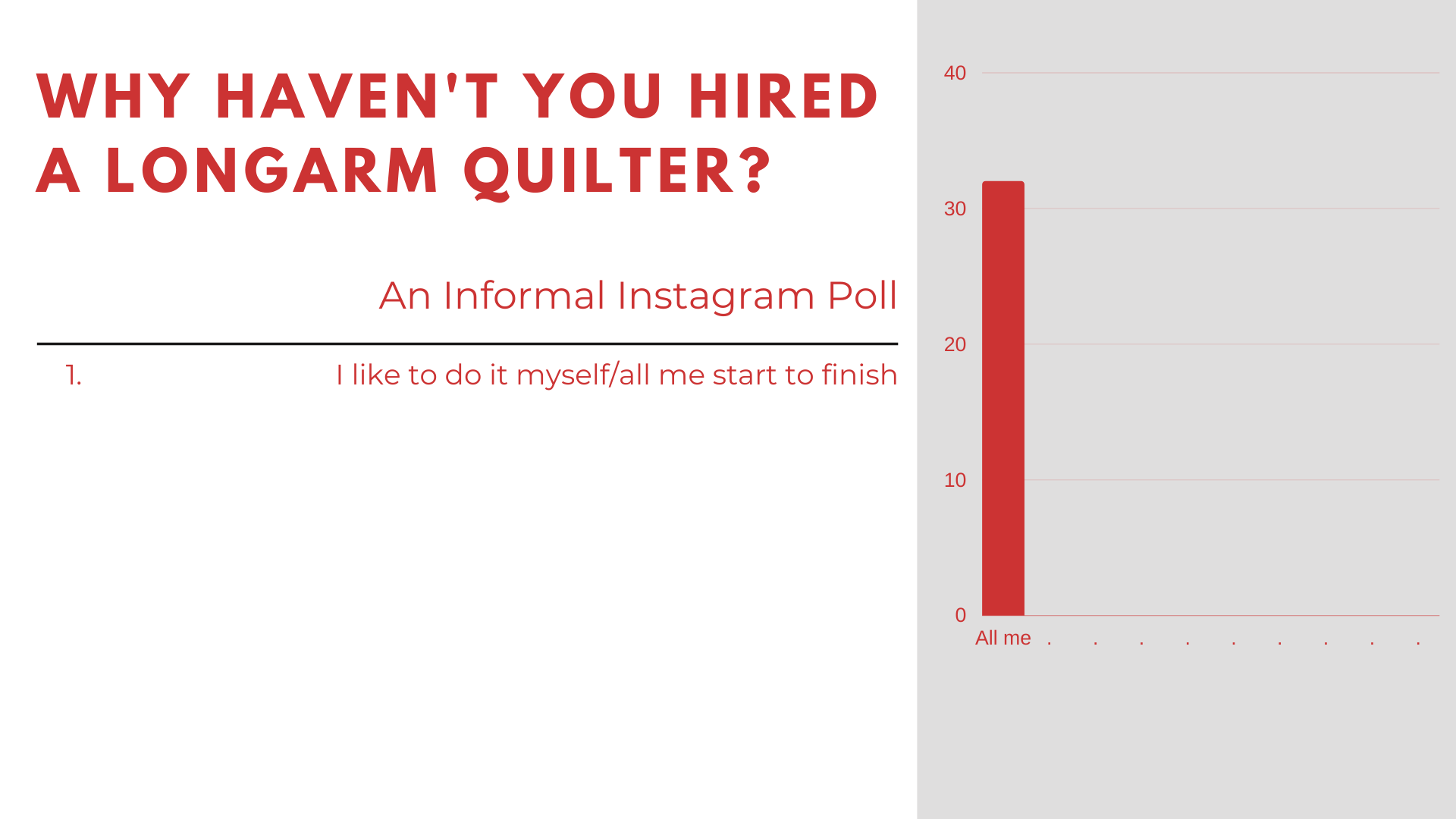
The top reason given was that the quilter wanted to do it all themselves from start to finish. I was actually surprised that this reason ended up being the top response! But I also understand this thinking. Personally, I fall within the same category. I've never hired a longarm quilter because I have always really liked the quilting process myself and wouldn't want to "outsource" my favorite part!
The remaining reasons for not hiring a longarm quilter were varied but fell into another nine categories.
This is where I want...
Tips for posting videos to Instagram with Jenae Alves
In the Longarm League membership, we published an interview with Jenae Alves of Vintage Stitch by Jenae.
This was one of those times that as soon as we hung up, I couldn't wait to share the Zoom call with the membership because it was packed with lots of useful tidbits about business. Plus, it's just so interesting to hear how other quilters in our specialized, little realm 😜 do things!
Jenae has grown her reach on Instagram by over 10k followers in the last year! She attributes a lot of her growth to effectively using video on the platform.
Let's start by talking about setup, shall we?
TIP #1:
It may surprise you to learn that in order to record a video of her longarm stitching a digital pantograph, she simply holds her iPhone in her hands as steadily as possible. How is that for a low-tech solution? I love the simplicity!
View this post on Instagram
For wider-shots of her frame as sh...








